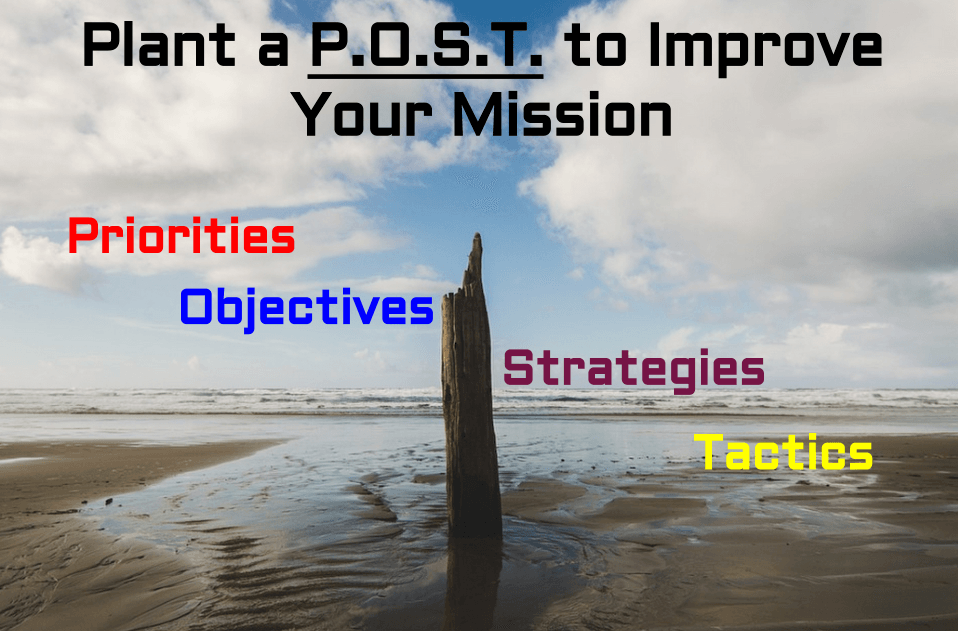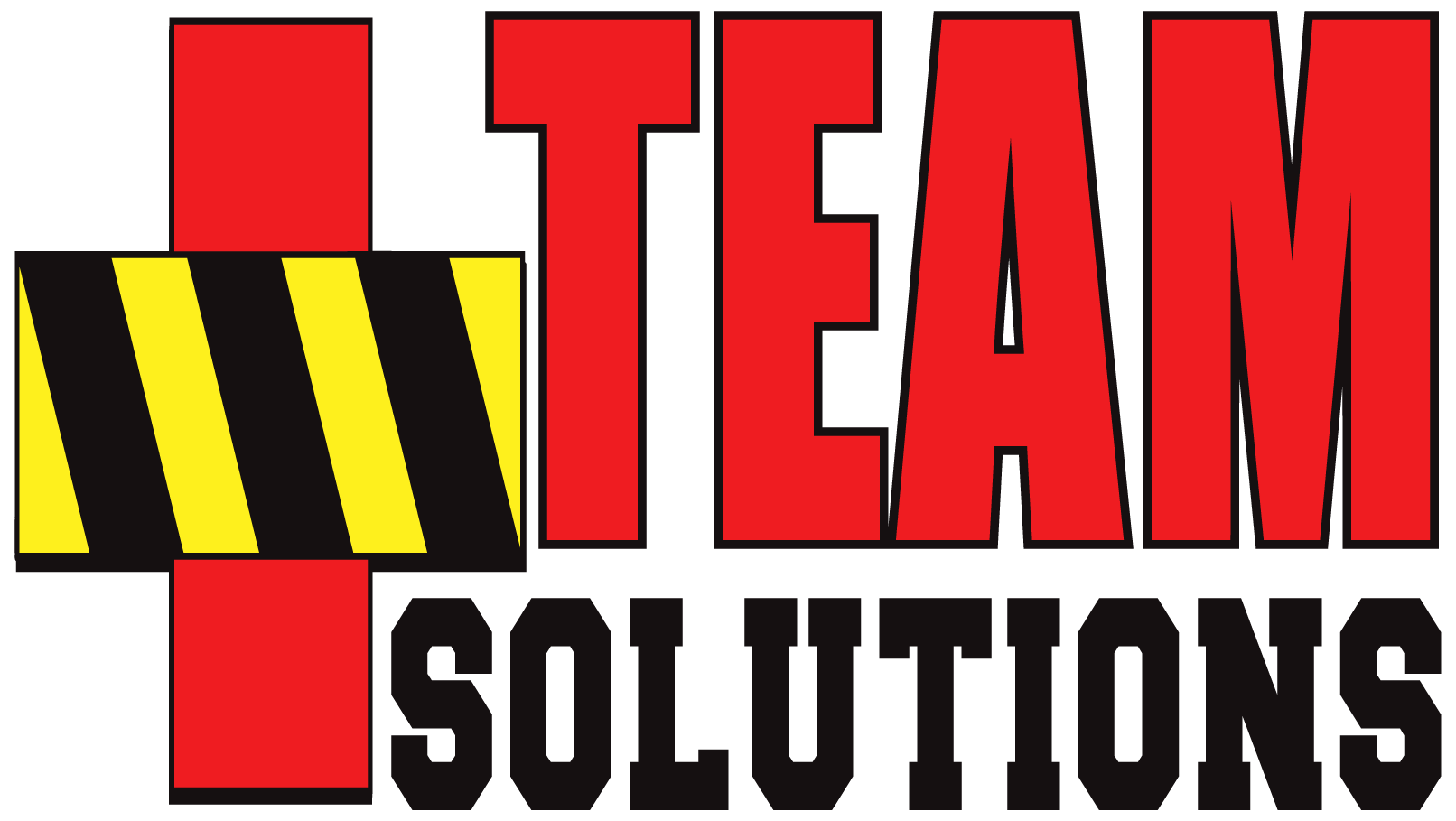How to conduct better missions using the P.O.S.T. Framework:
Have you heard this story about “Bill” and his successful project pre-plan? It goes like this ... (and keep reading for a treat):
- Bill needs to clean his garage so his wife can park her new car inside before the summer heat arrives.
- Bill decides that before the end of Memorial Day weekend he'll donate old items, put away his tools and containerize the camping gear.
- Bill determines that he needs to schedule a trip to Goodwill and he needs new storage bins and a bigger toolbox from Home Depot.
- Bill acquires what he needs before for the weekend, donates the old stuff, boxes up and stores the camping stuff and reorganizes his tools.
Oh, and when he’s done, Bill sits back with a cold beverage along with his happy wife. Mission accomplished!
Go, Bill!
Pretty straightforward project that we can all likely relate too, right?
Yet when we’re tasked with defining and executing priorities, objectives, strategies, and tactics … we often freeze up while trying to remember which is which and in which order.
Well, that ends now.
To improve your mission - any mission - remember to plant a P.O.S.T. first: Priorities + Objectives + Strategies + Tactics

Priorities
- Priorities address the WHY question of your mission.
- In an emergency response environment, this answer is “to maximize Life Safety: yours, your team’s and your victims … in that order”.
Objectives
- Objectives address the WHAT questions.
- Specifically, What future condition indicates the end of the mission?
- These are the specific, measurable, achievable, relevant and time-bound. You know, S.M.A.R.T.
Strategies
- Strategies address the Big, Conceptual HOW questions.
- How will the objectives be met?
Tactics
- Tactics address the Small, Specific HOW questions.
- How will the strategies be executed?
Let’s revisit ol’ Bill and his garage project.
- Bill needs to clean the garage - Since his wife’s happiness is important, that’s his priority.
- Bill creates specific objectives that will measure his accomplishment. One may be to “donate 2 bags of old clothes to Goodwill by Saturday at 5pm”.
- Bill strategizes the most effective approach to achieve that objective, like “search through each closet for clothes that haven’t been worn in 6 months”.
- Bill executes each tactic needed to achieve his objectives, like “sort the clothes into kid clothes and adult clothes, bag them and then drive them to Goodwill”.
Each phase has an important role in addressing his priority … and each phase in isolation is unlikely to be successful.
- Priorities without specific objectives remain an uninitiated dream.
- Objectives without a strategy do not get accomplished.
- Strategies without tactics are plans without action.
- Tactics without direction can be aimless or even counterproductive busy work.
Objectives!
NOTE: In the inevitable haze and confusion of a complex mission, the Objectives are where we look for clarity.
- If you only identify one part of your P.O.S.T., make sure’s it’s the Objectives.
For example: If Bill were to find himself wanting to sit on the couch to watch re-runs of Gunsmoke on TV instead of cleaning the garage, then he simply measures the action of watching TV with the stated Objective of cleaning the garage. If watching TV doesn’t support the garage Objective, Bill will have clear evidence that he must re-engage on the garage objective or change his objectives to include watching TV.
He may have a poorly articulated priority, a poor strategy, and poor tactics, but if he has clear Objectives he'll always have a clear target to shoot at.
So the next time you’re cleaning the garage, climbing Mount Kilimanjaro or organizing a response to a tornado, remember to plant a POST first.
Now it’s your turn.
Click below for your free download of a pre-Mission Worksheet using P.O.S.T.
It provides a step by step guide that reminds, prompts and tracks your own mission using the P.O.S.T. model.

